DEMOCRACY REMEMBERED--The writer, politician, and anti-war activist Tom Hayden died yesterday at the age of 76, a year and a half after suffering a stroke. Now, as they say, he rests in peace—a man who devoted his life to making the world a place where the living can do the same. From helping to found the New Left in the 1960s right up to this turbulent election season, Hayden was a pillar of Democratic politics, a brilliant strategist and political thinker, and a leading advocate for a more just and equal society.
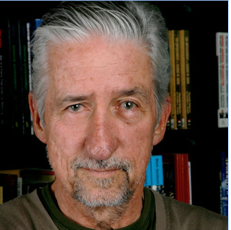 Here at The Nation we are especially saddened by the loss of a close friend. A longtime contributor to these pages, Hayden joined our editorial board just weeks before the attacks of September 11, which gave a new resonance to his life’s work. He attended most biannual meetings, often in person and sometimes by Skype, until September of 2015. His most recent piece for the magazine, published in April, was a moving essay about why he was supporting Hillary Clinton in the Democratic presidential primary:
Here at The Nation we are especially saddened by the loss of a close friend. A longtime contributor to these pages, Hayden joined our editorial board just weeks before the attacks of September 11, which gave a new resonance to his life’s work. He attended most biannual meetings, often in person and sometimes by Skype, until September of 2015. His most recent piece for the magazine, published in April, was a moving essay about why he was supporting Hillary Clinton in the Democratic presidential primary:
So here we are, at the end of one generation on the left and the rise of another. Both camps in the party will need each other in November—more than either side needs to emerge triumphant in the primary. We still need the organizing of a united front of equals to prevail against the Republicans. It will take a thorough process of conflict resolution to get there, not a unilateral power wielding by the usual operatives. It’s up to all of us.
Though an irreplaceable voice for peace has been silenced, there will be one more reminder of Hayden’s unsurpassed ability for making readers understand what it takes to hold the powerful to account. Next spring, Yale University Press will publish Hayden’s final book, Hell No: The Forgotten Power of the Vietnam Peace Movement. For now, here is a sampling of some of the important work Hayden published in our pages.
A month after Ronald Reagan’s inauguration as president, Hayden wrote a cover story titled “The Future Politics of Liberalism” (February 21, 1981), which showed that there was much more to his vision of the United States that the limited set of issues that usually falls under the rubric of politics:
We need more than ever a participatory society in which persons of all life styles believe that they matter, instead of the escapist culture that absorbs millions in irrelevance. We cannot contend with the coming of external limits unless we delve more into our rich inner potentials.
It comes down to moving from a wasteful, privately oriented, self-indulgent existence to a more conserving, caring and disciplined life style. The cornerstone has to be a renewal of self-reliance, not the outmoded frontier fantasy of the Republican philosophers, but the reassertion of personal responsibility in everything from conserving resources to decentralizing services to keeping ourselves well through self-care to practicing a “right livelihood” in business. It is a change from planned obsolescence to the production of useful goods that last, from consumer madness to the achievement of inner satisfactions, from the opulence of Jay Gatsby to the frugal self-assurance of Henry David Thoreau.
More important than money and technique in elections is the factor of motivation and vision. The Democrats (or someone else) will return to national leadership when they are inspired again.
The following year Hayden was elected to the California state assembly, where he passed important bills on education and animal rights and participated in a US Commerce Department delegation to Northern Ireland. In 1992, voters promoted him to the state senate, and a few years later he began writing often for The Nation.
“Unfinished Business: Can We Beat the Special-Interest State?” (September 9/16, 1996):
Though for the next few months most progressives like myself will work to re-elect Bill Clinton and a Democratic Congress, it is not enough o beat back the Gingrichites only to return to the Democratic status quo. The next great debate, reminiscent of the sixties, should be over the values and direction of the Democratic Party. The fight will be for the soul of our politics, not a policy-wonk debate about training vouchers for jobs that may not exist. I would begin with a public demand to free the political system from the suffocating grip of special-interest money, thus opening the possibilities of building a sustainable economy and environment for the next generation, instead of dooming them to corporate downsizing, a public sector dominated by prisons and a planet degraded beyond repair.
Too many of our elders in the sixties discarded their rebellious children or remained silent when the time came to take a controversial stand against their government. The question haunts me: now that authority has fallen to this generation, how will we be different from our parents toward those downsized to despair?
Twenty years later, with the Clintons likely to return to the White House, it’s still a good question.
More important than money and technique in elections is the factor of motivation and vision.
In May of 1999, Hayden wrote about “The Liberals’ Folly” in supporting the Clinton Administration’s bombing of Kosovo. Drawing on his memory of the fight against the Vietnam War, Hayden said it was the job of liberalism to critique such military adventures abroad, not to support them when Democrats were in the White House. The “confident expectation of an early military victory,” Hayden wrote, “is sinking in a Vietnam-style quagmire. Their political fortunes in 2000 are fast becoming collateral damage.”
In 2002, Hayden reflected on “The Port Huron Statement at 40”:
Perhaps the most important legacy of the Port Huron Statement is the fact that it introduced the concept of participatory democracy to popular discourse and practice. It made sense of the fact that ordinary people were making history, and not waiting for parties or traditional organizations.
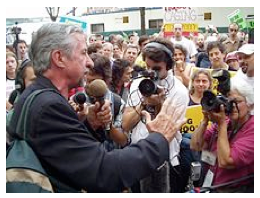 The notion was used to define modes of organization (decentralization, consensus methods of decision-making, leadership rotation and avoidance of hierarchy) that would lead to social transformation, not simply concessions from existing institutions. It proved to be a contagious idea, spreading from its academic origins to the very process of movement decision-making, to the subsequent call for women’s liberation.
The notion was used to define modes of organization (decentralization, consensus methods of decision-making, leadership rotation and avoidance of hierarchy) that would lead to social transformation, not simply concessions from existing institutions. It proved to be a contagious idea, spreading from its academic origins to the very process of movement decision-making, to the subsequent call for women’s liberation.
These participatory practices, which had their roots in the town hall, Quaker meetings, anarchist collectives and even sensitivity training, are carried on today in grassroots movements such as the one against corporate globalization.
The strength of organizations like the early SDS or SNCC, or today’s Seattle-style direct-action networks, or ACT UP, is catalytic, not bureaucratic. They empower the passion of spontaneous, communal revolt, continue a few years, succeed in achieving reforms and yet have difficulty in becoming institutionalized.
But while hierarchical mass organizations boast more staying power, they have trouble attracting the personal creativity or the energy of ordinary people taking back power over their lives. Participatory democracy offers a lens for looking at all hierarchies critically and not taking them as inevitable. Perhaps the two strands–the grassroots radical democratic thrust and the need for an organization with a program–can never be fused, but neither can one live without the other.
The Port Huron Statement claimed to be articulating an “agenda for a Generation.” Some of that agenda has been fulfilled: The cold war is no more, voting rights for blacks and youth have been won, and much has changed for the better in the content of university curriculums. Yet our dreams have hardly been realized.
The Port Huron Statement was composed in the heady interlude of inspiration between the apathetic 1950s and the 1960s’ sudden traumas of political assassinations and body counts. Forty years later, we may stand at a similar crossroads. The war on terrorism has revived the cold war framework. An escalating national security state attempts to rivet our attention and invest our resources on fighting an elusive, undefined enemy for years to come, at the inevitable price of our civil liberties and continued neglect of social justice.
To challenge the framework of the war on terrorism, to demand a search for real peace with justice, is as difficult today as challenging the cold war was at Port Huron. Yet there is a new movement astir in the world, against the inherent violence of globalization, corporate rule and fundamentalism, that reminds us strongly of the early 1960s. Is history repeating? If so, “participatory democracy” and the priorities of Port Huron continue to offer clues to building a committed movement toward a society responsive to the needs of the vast majority. Many of those who came to Port Huron have been on that quest ever since.
Increasingly, Hayden turned his attention to how that quest could be linked up with similar ones around the globe, including among those dispossessed by the forces of neoliberal globalization. After attending the World Social Forum at Porto Alegre, Brazil, in early 2003, Hayden wrote that “an alternative” to global capitalism was emerging in Latin America:
Instead of NAFTA’s corporate escape from New Deal-style regulation, the new agenda would be an extension of the most progressive elements of the New Deal to global society, a new social contract in place of market fundamentalism. Globalization from the bottom up. Instead of NAFTA-style agreements that solely protect foreign investors, this alternative model would offer enforceable protections to workers, women and the environment as well–on both sides of the border. Instead of sweatshops and child labor there would be unions and literacy programs. Instead of damming rivers and slashing rainforests, there would be conservation programs for future generations.
As he concluded, “Powerful new coalitions for change are being birthed.”
The same week that issue of The Nation hit newsstands, the United States began bombing Iraq. As the war foundered and those promised WMDs mysteriously disappeared, an anti-war movement began to gain steam, and Hayden had plenty of wisdom to offer about how best to proceed. In “How the Peace Movement Can Win” (December 17, 2007), Hayden proposed engaging in a “domestic war” to take back control of the government in the 2008 elections and end the war. The United States was “approaching a similar chasm in public opinion” as the one that tore the country apart in the late 1960s. “With a majority of Americans wanting and expecting a withdrawal from Iraq, the outcome of 2008 may depend on who has the greater will to win.”
Another piece worth revisiting is Hayden’s essay from the Nation of April 16, 2012, “Participatory Democracy: From the Port Huron Statement to Occupy Wall Street,” in which he reflected on the similarities and differences between the two movements a half-century apart:
I don’t know whether history begins anew or just repeats its sputtering cycles again and again. What is clear enough is that the Occupy movement began without pundit predictions, without funding, without organization, with only determined people in tents, countless Davids taking on the smug Goliath in spontaneous planetary resistance. While Occupy could not and would not agree on making detailed demands, it did agree, as noted earlier, on “direct and transparent participatory democracy” as its first principle.
There is endless speculation these days about the future of Occupy Wall Street. Since I was pleasantly surprised by its birth, I am not one to predict its growth. I prefer to wait and see. Across the Western world, the smoldering division is becoming one between unelected wealthy and foreign private investors and the participatory democracies of civic societies with their faltering elected governments.
Hayden was critical, however, of what he saw as the Occupiers’ unwillingness to sully themselves by working with elected officials to enact at least modified versions of the sweeping changes they proposed. Among the new generation of activists, he said, there is a broad suspicion of seeking reforms that require alliances with top-down organizations, especially with progressive elected officials.
The same dilemmas arose in the ’60s in the relationships between SNCC and the national civil rights leadership, and between SDS and the liberal Democrats we blamed for starting the Vietnam War. In retrospect, however, it’s impossible to reach a majority, much less the 99 percent, while rejecting coalition politics.
Nevertheless, some Occupy theorists seem to believe they can do so. For example, Micah White, a brilliant editor at Adbusters, writes that “an insurrectionary challenge to the capitalist state” will be mounted by “culture-jammers” who create “fluid, immersive, evocative meta-gaming experiences that are playfully thrilling and [that] as a natural result of their gameplay” a social revolution will arise as “pure manifestation of an anonymous will of a dispersed, networked collective.” It is as if the pure insurrectionary act, memorialized as performance art, is more important than the construction of any alliances, or any consequences that flow from it.
Ultimately, however, he thought the two movements had much in common:
It is time for a participatory New Deal, to bring the banks and corporations under the regulations and reforms they have escaped through runaway globalization. This year marks the first presidential campaign in our lifetime when the gluttony of Wall Street, the failures of capitalism, the evils of big money in politics and a discussion of fundamental reform will be front and center in election debates. No doubt the crisis that gave rise to Occupy will not be fixed by an election, but that’s beside the point. Elections produce popular mandates, and mandates spur popular activism. It’s time to organize a progressive majority, and the vision and strategy of Port Huron is worth considering as a guide.
And so it still is. Goodbye, Tom.
(This rememberance was written by the Nation editors and published most recently at Common Dreams. The Nation is the oldest continuously published weekly magazine in the United States. )
-cw
 “‘Reasonably foreseeable,’ we’ve been wondering what that meant, and I guess the answer is that it depends on the species and the circumstance,” Parenteau said. “Pushing it out 50 to 100 years is certainly pushing the envelope on ‘foreseeable.’ I can see where other courts would disagree with that and think it is speculative.”
“‘Reasonably foreseeable,’ we’ve been wondering what that meant, and I guess the answer is that it depends on the species and the circumstance,” Parenteau said. “Pushing it out 50 to 100 years is certainly pushing the envelope on ‘foreseeable.’ I can see where other courts would disagree with that and think it is speculative.”



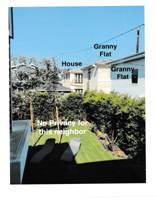 These oversized second units can be squeezed into backyards in single family neighborhoods throughout Los Angeles -- and sometimes into front yards! And, even though the City’s adopted standards would otherwise forbid it, the 140 second unit applications filed during the 5-day end of September “window” can be built in designated “hillside” areas and on “substandard” streets. (Ugly, severely impacting second units of the kind allowed under the default standards during the 5-day window can be seen in the attached photos.)
These oversized second units can be squeezed into backyards in single family neighborhoods throughout Los Angeles -- and sometimes into front yards! And, even though the City’s adopted standards would otherwise forbid it, the 140 second unit applications filed during the 5-day end of September “window” can be built in designated “hillside” areas and on “substandard” streets. (Ugly, severely impacting second units of the kind allowed under the default standards during the 5-day window can be seen in the attached photos.) 

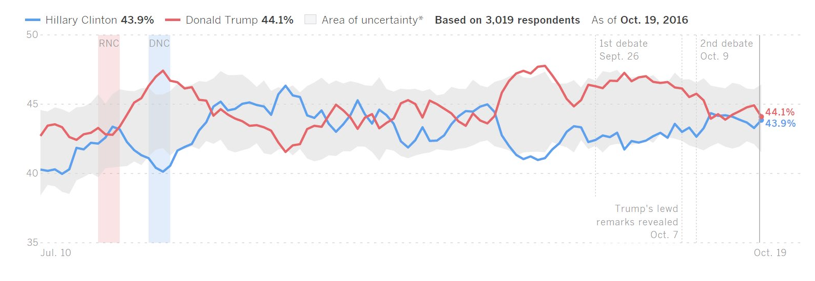
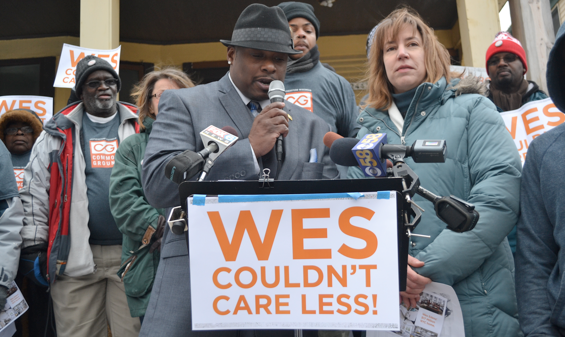
 On the dark side of things however, that return violates the “reasonable profit margin” clause of Mr. Edens’ contracts with LA County. And, to no one’s surprise, so far not a peep from LA Parks and Rec. So the good times can continue to roll—especially if the County continues its non-enforcement of American Golf’s contractual obligation to disclose its Players Club membership revenue figures.
On the dark side of things however, that return violates the “reasonable profit margin” clause of Mr. Edens’ contracts with LA County. And, to no one’s surprise, so far not a peep from LA Parks and Rec. So the good times can continue to roll—especially if the County continues its non-enforcement of American Golf’s contractual obligation to disclose its Players Club membership revenue figures. 
 Here at The Nation we are especially saddened by the loss of a close friend. A longtime contributor to these pages, Hayden joined our editorial board just weeks before the attacks of September 11, which gave a new resonance to his life’s work. He attended most biannual meetings, often in person and sometimes by Skype, until September of 2015. His most recent piece for the magazine, published in April, was
Here at The Nation we are especially saddened by the loss of a close friend. A longtime contributor to these pages, Hayden joined our editorial board just weeks before the attacks of September 11, which gave a new resonance to his life’s work. He attended most biannual meetings, often in person and sometimes by Skype, until September of 2015. His most recent piece for the magazine, published in April, was  The notion was used to define modes of organization (decentralization, consensus methods of decision-making, leadership rotation and avoidance of hierarchy) that would lead to social transformation, not simply concessions from existing institutions. It proved to be a contagious idea, spreading from its academic origins to the very process of movement decision-making, to the subsequent call for women’s liberation.
The notion was used to define modes of organization (decentralization, consensus methods of decision-making, leadership rotation and avoidance of hierarchy) that would lead to social transformation, not simply concessions from existing institutions. It proved to be a contagious idea, spreading from its academic origins to the very process of movement decision-making, to the subsequent call for women’s liberation. 


